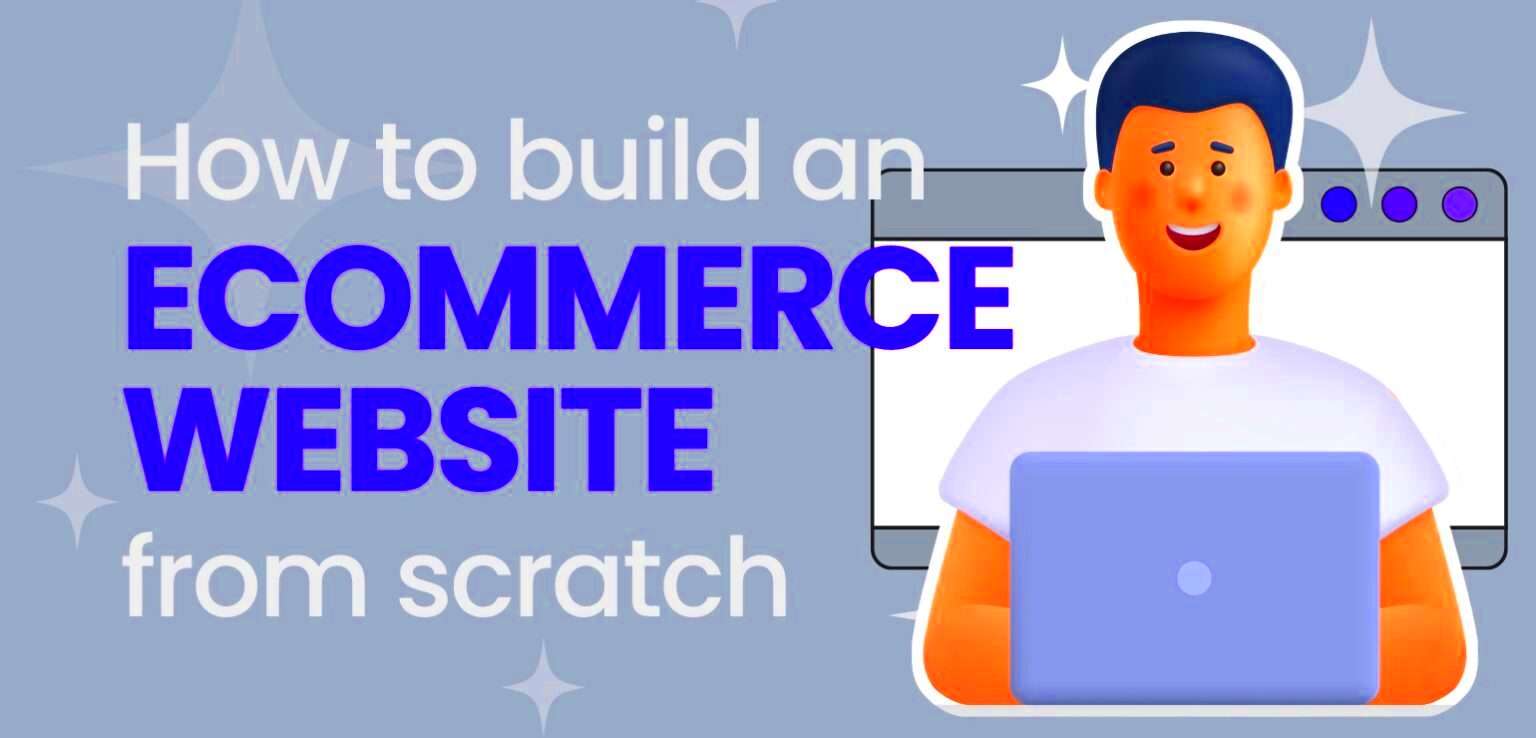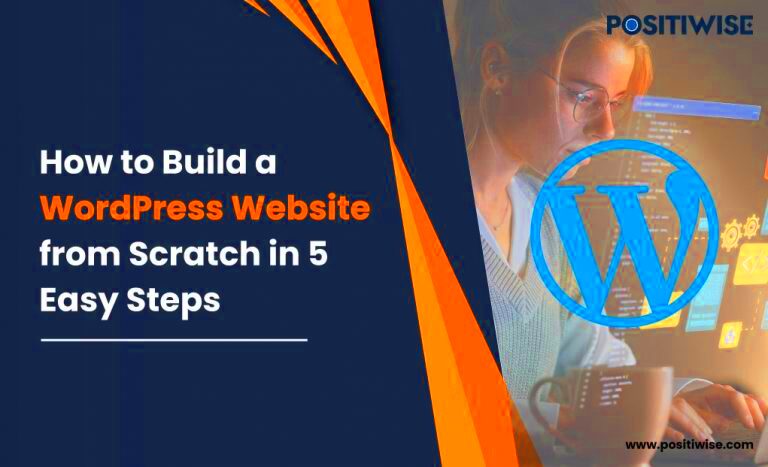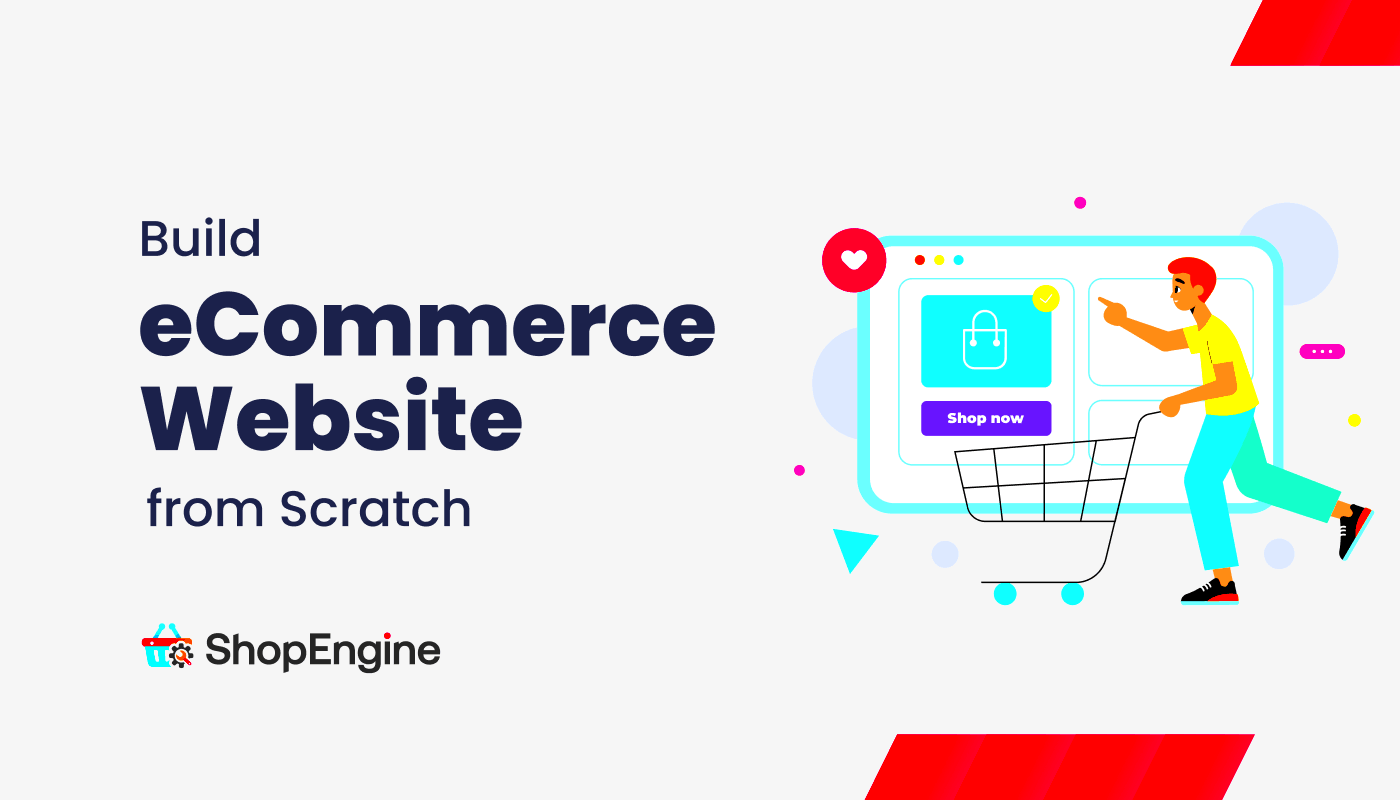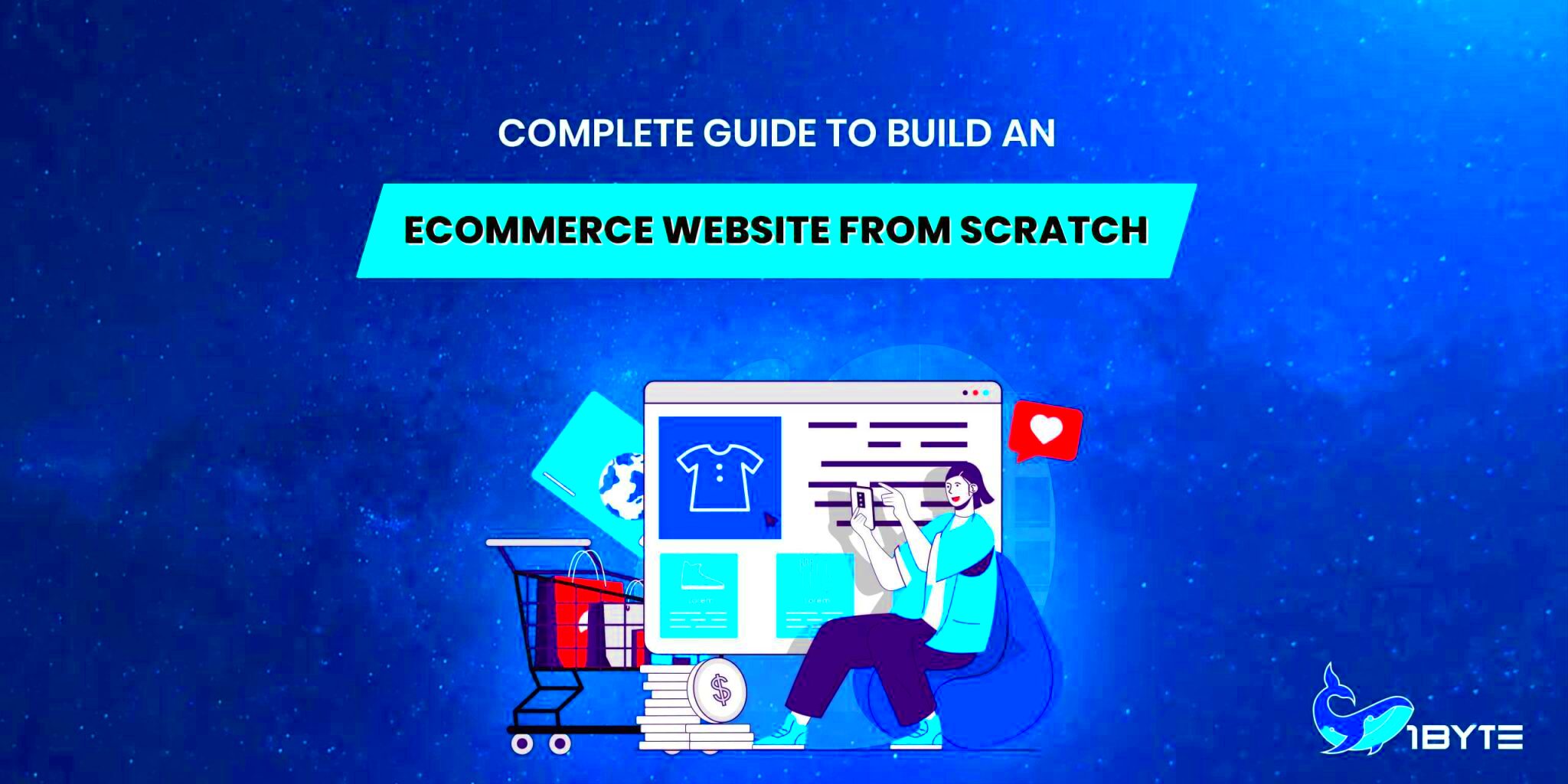Building an ecommerce website can feel daunting, but WordPress makes it easier than you might think. In this section, we’ll explore what a WordPress ecommerce site is all about and why it’s a fantastic choice for online sellers. Whether you’re selling products, services, or digital downloads, WordPress provides the tools to create a stunning storefront that customers will love.
Choosing the Right Domain and Hosting

One of the first steps in creating your WordPress ecommerce site is selecting the perfect domain name and reliable hosting plan. Both of these elements are critical for establishing your online presence and ensuring your website operates smoothly.
1. Selecting a Domain Name
Your domain name is the address customers will use to find your store online. Here are some tips to help you choose a great one:
- Keep it Short and Simple: Aim for a name that is easy to remember and spell.
- Reflect Your Brand: Choose a name that represents your business and the products you sell.
- Avoid Numbers and Hyphens: These can confuse customers and lead to mistakes when typing your URL.
- Use Keywords Wisely: If possible, include keywords related to your business that can help with search engine optimization (SEO).
2. Finding Reliable Hosting
Next, you’ll need reliable hosting to keep your site running efficiently. Here are a few popular options for WordPress ecommerce hosting:
| Hosting Provider | Best For | Starting Price |
|---|---|---|
| Bluehost | Beginner-friendly, great support | $2.95/month |
| SiteGround | Excellent uptime and speed | $3.99/month |
| WP Engine | Managed WordPress hosting, premium performance | $20/month |
Choose a hosting provider that fits your budget and business needs. Look for features like adequate storage, SSL certificates, and customer support availability. With the right domain and hosting in place, you’ll set a strong foundation for your WordPress ecommerce journey!
Installing WordPress

Installing WordPress is akin to laying the foundation of your dream ecommerce store. It’s simple, efficient, and can be completed in just a few steps, even if you’re not a tech wiz! So, grab a cup of coffee, and let’s dive in.
First things first, you need a domain name and web hosting. A domain name is your website’s address on the internet, while web hosting is where all your website’s data is stored. There are many hosting providers out there like:
- Bluehost
- SiteGround
- HostGator
Once you’ve picked a provider and registered your domain, they usually offer a one-click WordPress installation option. Here’s a simple breakdown:
- Log in to your hosting account.
- Locate the WordPress installer, often found in the control panel.
- Select your domain and follow the prompts.
- Fill in details like your site title, username, and password.
- Click “Install” and voilà, WordPress is ready!
After installation, access your new website by visiting yourdomain.com/wp-admin. Enter the login details you just created, and you’ll be in the WordPress dashboard, where the real fun begins. This is the hub from which you can manage everything—from adding new pages to tweaking design elements. Exciting, right?
Selecting the Best Ecommerce Theme

Now that you have WordPress up and running, it’s time to choose the perfect theme for your ecommerce website! Think of your theme as the clothing for your store—it defines your style and first impressions matter.
When selecting a theme, consider the following aspects:
- Responsiveness: A responsive theme ensures your site looks great on all devices, from desktops to smartphones.
- Customization Options: Look for themes that allow personalization so you can tweak colors, fonts, and layouts according to your brand.
- Compatibility with Plugins: Ensure your theme works well with popular ecommerce plugins like WooCommerce to harness their full potential.
- Loading Speed: Fast-loading themes improve user experience and can positively impact your SEO ranking.
- Support and Updates: Go for themes that are regularly updated and offer customer support in case you run into any issues.
Here’s a quick table of popular ecommerce themes to consider:
| Theme Name | Best For | Price |
|---|---|---|
| Astra | Customizability | Free / Premium |
| Flatsome | Responsive Design | $59 |
| OceanWP | Speed & SEO | Free / Premium |
| Storefront | WooCommerce Compatible | Free |
Once you’ve chosen a theme, install and activate it directly from the WordPress dashboard. This is where you can start customizing your site to reflect your unique brand. Happy theming!
5. Essential Ecommerce Plugins

Building a successful WordPress Ecommerce site isn’t just about having a pretty storefront—it’s also about functionality. That’s where plugins come in! Plugins are like apps for your WordPress site, and they can add incredible features to boost your online store. Here are some essential ecommerce plugins you should consider:
- WooCommerce: This is the backbone of any WordPress ecommerce site. It’s the most popular plugin, allowing you to create product listings, manage inventory, and process payments with ease.
- Yoast SEO: You want people to find your store, right? Yoast helps optimize your site’s SEO, so you can rank better in search engines and attract more visitors.
- Mailchimp for WooCommerce: Building a mailing list is crucial. This plugin integrates your store with Mailchimp, making email marketing a breeze.
- WP Super Cache: Speed is everything in ecommerce! This plugin helps improve your site’s loading time, giving your customers a smoother shopping experience.
- TrustPulse: Proven to boost conversions, TrustPulse shows real-time notifications of customer activity, creating a sense of urgency and encouraging others to purchase.
These plugins, along with others tailored to your specific needs, can significantly enhance your online store’s functionality. They can help streamline operations, improve customer engagement, and boost sales. Don’t forget to explore additional options as your business grows!
6. Setting Up Your Online Store
Alright, you’ve got your theme, essential plugins, and a vision in mind—let’s get down to the nitty-gritty of setting up your online store! Here’s a step-by-step guide to help you launch your ecommerce venture smoothly:
- Create Product Categories: Start by organizing your products into categories. This makes it easier for customers to find what they’re looking for. Think of categories like sections in a mall!
- Add Your Products: Now it’s time to populate those categories with products! Include high-quality images, detailed descriptions, prices, and variations (if applicable). Make sure to speak to your customers; showcase how your products can solve their problems.
- Set Up Payment Gateways: Choose how you want to get paid. Popular options include PayPal, Stripe, and credit card processing. A seamless checkout process can significantly reduce cart abandonment.
- Configure Shipping Options: Determine your shipping methods and rates. You can offer flat rates, free shipping, or real-time carrier rates. Whatever you choose, be transparent with your customers!
- Establish Return & Refund Policies: Clearly outline your policies. Customers appreciate transparency and are more likely to finalize their purchases when they know they can return products if needed.
- Test Your Store: Before going live, make sure you test everything! Go through the purchasing process yourself to ensure that everything runs smoothly and check if the process is user-friendly.
Once you’ve ticked all the boxes, it’s time to launch your store! Don’t forget that marketing is just as crucial as the setup, so be ready to promote your store and engage with your audience. Best of luck with your new ecommerce journey!
7. Adding Products to Your Store
Once you’ve set up your WordPress eCommerce website, it’s time to add products to your store! This step is crucial as it brings life to your online shop. Let’s walk through the process.
Firstly, navigate to your WordPress dashboard and find the Products section in the menu. Click on Add New to begin adding your products. You’ll find a familiar text editor where you can enter the product title, description, and images. Here’s a quick breakdown of essential elements you should include:
- Product Title: Make it catchy and descriptive.
- Description: Write a detailed description that highlights the features and benefits.
- Product Image: Use high-quality images to showcase your product. Consider adding multiple images for different angles or color options.
- Price: Clearly display the price. Consider using strikethroughs for discounts to grab attention.
- Categories: Organize your products into categories for easy navigation.
- Tags: Use relevant keywords to help with the search function.
- Inventory Information: Manage stock levels to keep track of what you have available.
Once you’ve filled out all the necessary information, you can publish the product to your store. Don’t hesitate to play around with various product options like variable products, where customers can choose size or color. Make sure to preview your product pages to ensure they look appealing!
Lastly, continuously monitor and update your product listings based on customer feedback and trends. A well-curated product catalog keeps your audience engaged and wanting more!
8. Configuring Payment and Shipping Options
After your products are added, the next key step is configuring payment and shipping options. Ensuring a smooth checkout experience is vital for any eCommerce store, as it can heavily influence conversion rates.
To configure payment options, go to the WooCommerce settings in your dashboard. Here, under the Payments tab, you can enable various payment gateways. Common choices include:
- PayPal: A popular choice known for its security and ease of use.
- Stripe: Great for credit card transactions without needing customers to leave your site.
- Bank Transfer: Ideal for B2B transactions or larger purchases.
Once you’ve selected the payment methods that suit your business model, be sure to enter any necessary account details to connect your gateway.
Now, let’s talk shipping. Navigate to the Shipping tab in the settings. Here’s what you need to focus on:
- Shipping Zones: Define the geographical areas where you will ship your products.
- Shipping Methods: Choose options like flat rate, free shipping, or local pickup based on your strategy.
- Shipping Classes: If you offer different shipping rates for various products (e.g., bulky items), set these up to help automate costs.
Don’t forget to test your entire purchasing process by making a test order! This will help you spot any issues in payment or shipping and ensure your customers have a seamless experience.
With these configurations in place, you’re well on your way to providing a professional shopping experience on your WordPress eCommerce website!
9. Optimizing for SEO
Optimizing your WordPress eCommerce website for search engines is crucial if you want to drive organic traffic and increase sales. While you might have built a fantastic site, without proper SEO, potential customers may never find you. Let’s dive into some key strategies to enhance your site’s visibility.
First and foremost, keyword research is the foundation of SEO. Tools like Google Keyword Planner and Ubersuggest can help you identify high-traffic keywords related to your products. Once you have your keywords, use them in key areas such as:
- Page Titles: Make sure each product has a unique title containing relevant keywords.
- Meta Descriptions: Craft compelling descriptions that encourage clicks.
- Headings: Structure your pages with H1, H2, and H3 tags using your chosen keywords.
- URLs: Create SEO-friendly URLs that reflect the product name.
Next, content is king. Regularly update your blog with quality content related to your niche. Consider writing product guides, how-to blogs, or reviews. Not only does this keep your site fresh, but it also helps establish your authority in the field.
Don’t forget about image optimization. Compress images for faster loading times, and always use descriptive alt text containing relevant keywords. It’s a small detail that can significantly impact your SEO.
Lastly, leverage tools like Yoast SEO or Rank Math to streamline the optimization process. These plugins provide valuable insights and help you refine your strategy over time. By following these steps, you’ll set your WordPress eCommerce website up for SEO success!
10. Testing Your Ecommerce Website
Once your WordPress eCommerce website is up and running, testing is an essential step that shouldn’t be overlooked. Testing ensures that every component of your site functions correctly and provides an optimal user experience. Here’s what you need to focus on.
Start by reviewing functionality. Check that all links, buttons, and forms work as intended. Make a list of all the key features you want to test:
- Product Pages: Ensure products display correctly, including images, descriptions, and prices.
- Shopping Cart: Add items to the cart and check if the total price updates accurately.
- Checkout Process: Test every step from the cart to payment confirmation.
- Mobile Compatibility: Make sure the site is fully responsive and functional on various devices.
Next, focus on performance testing. Use tools like Google PageSpeed Insights or GTmetrix to analyze loading times. A slow website can deter potential customers, so aim for a loading time under three seconds.
Don’t forget about browser compatibility. Test your website on different browsers like Chrome, Firefox, Safari, and Edge to ensure it looks and works consistently across all platforms.
Finally, gather feedback from potential users. Launch a beta version of your site and ask friends or family to navigate it. Their insights can be invaluable and help you identify any issues you may have missed.
By thoroughly testing your eCommerce website, you’ll provide a seamless shopping experience for your customers and ensure your site is ready for the big league!
Launching Your WordPress Ecommerce Website
So, the moment you’ve been waiting for is finally here! You’ve spent countless hours setting up your WordPress ecommerce site, and now it’s time to launch it into the bustling online marketplace. But before you hit that elusive publish button, there are a few steps you should take to ensure a smooth launch.
First things first, make sure everything is working properly. It’s a good idea to do a final check for any broken links or missing images. Tools like Google Search Console can help you identify any issues. Also, test out the checkout process. You want to ensure that customers can smoothly transition from adding items to their cart to completing their purchase without any hiccups.
Next, consider setting up your website analytics. Integrating Google Analytics can provide insightful feedback on how visitors interact with your site, which can inform your marketing strategies later on. A well-informed launch can make all the difference in your ecommerce journey!
Then, craft a launch announcement. Share your exciting news on social media platforms, and consider sending an email to your subscribers. If you have existing followers from other channels, they can be your first customers, so keep them engaged! To create some buzz, you might even think about offering an exclusive discount for the first few customers or a small giveaway.
Lastly, make sure that you’re prepared for any potential issues that may arise after your launch. Even the best plans can face unexpected challenges. Have a quick response team ready to address any customer queries or issues that come your way. With everything in place, you’re ready to make your ecommerce dreams a reality!
Marketing Your Online Store
Congratulations! Your WordPress ecommerce website is up and running, but the real fun starts now—marketing it to the world. The online marketplace can be a crowded one, so having a solid marketing strategy is essential to getting noticed.
First, leverage the power of social media. Platforms like Instagram, Facebook, and Pinterest are fantastic for visually showcasing your products. Share eye-catching photos, product demos, or customer testimonials. Don’t forget to use relevant hashtags to broaden your reach. You can even run ads targeted to your ideal customer demographic to boost your presence.
Next, consider creating content that can drive traffic to your site. Blogging about topics related to your products can establish you as an authority in your niche and help improve your site’s SEO. You might write how-to guides, product reviews, or industry news that can engage your audience and prompt them to check out your store.
| Marketing Strategy | Description |
|---|---|
| Social Media Marketing | Engage on platforms like Instagram and Facebook; use targeted ads. |
| Content Marketing | Share blog posts that attract your target audience. |
| Email Marketing | Send newsletters and promotions to your subscribers. |
| SEO Optimization | Optimize product pages using relevant keywords. |
Another powerful strategy is email marketing. Build an email list by offering value, like discounts or free guides, in exchange for customer emails. Keep your communication regular but not overwhelming. A good practice is to send newsletters that highlight new products, exclusive deals, and content from your blog.
Finally, consider collaborations or partnerships with influencers in your niche. A positive review or shout-out from a trusted source can significantly boost your credibility and expose your brand to a wider audience.
Marketing might seem daunting, but with a clear plan and consistent efforts, your online store can flourish in the ecommerce world!
Maintaining and Updating Your Website
Building a WordPress eCommerce website is just the beginning of your journey. To ensure your site remains effective, user-friendly, and secure, regular maintenance and updates are crucial. Let’s explore some key maintenance tips.
1. Regular Backups: Always have a backup plan! Use plugins like UpdraftPlus or BackupBuddy to schedule regular backups of your database and files. This way, if anything goes wrong, you can quickly roll back to a stable version.
2. Update Themes and Plugins: Outdated themes and plugins can lead to security vulnerabilities. Check for updates regularly—WordPress generally notifies you when updates are available. Make sure to test your website after updates to ensure everything works perfectly!
3. Monitor Site Performance: Keep an eye on how your website performs. Tools like Google PageSpeed Insights and GTmetrix can help you analyze loading speeds. If your site is slow, consider optimizing images, using a caching plugin, or upgrading hosting plans.
4. Security Checks: Website security should be a top priority. Use security plugins like Wordfence or Sucuri to scan for vulnerabilities and set up a firewall. Ensure your site runs on HTTPS for secure transactions.
5. Content Updates: Regularly update your content to keep it fresh and engaging. This includes adding new products, writing blog posts, or refreshing old content. Engaging content helps with SEO and keeps your audience interested.
6. Analytics Monitoring: Utilize tools like Google Analytics to track your site’s performance. Understanding your audience’s behavior can help you make informed decisions about what to change or improve.
In summary, maintaining and updating your eCommerce website is a continuous process. Stay proactive to ensure your website runs smoothly and securely, providing the best experience for your customers!
Conclusion
Building a WordPress eCommerce website from scratch might seem like a daunting task, but with the right steps, it becomes manageable and rewarding. From choosing the right hosting service and theme to optimizing for SEO, each step contributes to creating a successful online store.
Your journey does not end at launch. Regular maintenance and updates are essential for keeping your website secure and efficient. Implementing strategies like regular backups, continuous content updates, and performance monitoring ensures that you stay ahead of the game.
Remember, your eCommerce website is not just a platform to sell products; it’s a dynamic space that requires attention and nurturing. Always seek feedback from customers, analyze trends, and stay updated with the latest eCommerce insights.
As you embark on this exciting venture, stay committed and keep learning. The world of eCommerce is vast, and with each successful sale, you’ll gain experience and confidence. Good luck with your WordPress eCommerce website, and may it thrive in the online marketplace!



